Rejection of Direct Blast Interference Based on Signal Phase-Matching Array Processing
Yun-Fei Chen,Zhen-Shan Wang,Bing Jia,and Gui-Juan Li
1.Introduction
In recent years,bistatic or multistatic acoustic testing becomes an effective way of object acoustic characteristics study,because bistatic or multistatic testing processes greater testing range than conventional monostatic acoustic testing[1],[2].However,bistaic acoustic testing still has some problems[3],[4].Fig.1 is a diagrammatic sketch of direct blast interference in bistatic acoustic testing.In bistatic acoustic testing configuration,the transmitter and the receiver are separated at a certain distance,and the transmission loss of the direct blast signal is smaller than the signal scattered by underwater objects,for the direct blast signal transmits directly from a transmitter to a receiver.When direct blast and object scattering signals arrive at the receiver at the same time,the object scattering signal is impossible to be extracted from the strong direct blast interference.Recently,the problem of direct blast rejection in bistatic acoustic testing has gained great interest.Conventional beamforming could separate two signals arrived from different directions,but this method fails under the condition that the interference is stronger and the space angle of interference and signal is too narrow.Adaptive filtering is another way of interference rejection[4],[5],but this method fails when signal and interference are strongly coherent[6].The above two ways are not suitable for direct blast rejection in bistaic acoustic testing.Sun[6],[7]studied the signal phase matching method for signal extraction from strong interference when signals are coherent and the noise are not coherent.But this method can not be used directly for direct blast interference rejection for the interference which is 30 dB greater than the object scattering signal[8].In this paper,based on the signal phase matching method,we extract the strong interference from the combined signal using signal phase matching array processing,and the object scattering signal could be obtained by subtracting the interference from the combined signal.Simulation and sea trial results show that the method we studied is very effective.

Fig.1.Direct blast interference in bistatic acoustic testing.
2.Principle of Direct Blast Rejection Based on Signal Phase Matching Signal Processing
2.1 Three Subarray Phase Matching Signal Processing
The uniform linear array with M elements is divided into three subarrays,which are(1~M-2),(2~M-1),(3~M),each subarray is composed of(M-2)elements.In the far field,the outputs of the three subarrays are


where Pi(jω),Si(jω),and Ni(jω),i=1,2,3,are frequency domain expression,of,si(t),and ni(t),respectively.φi,i=1,2,3,is the phase difference of signal arrival.Through phase shifting and solving,the real part and imaginary part are expressed as
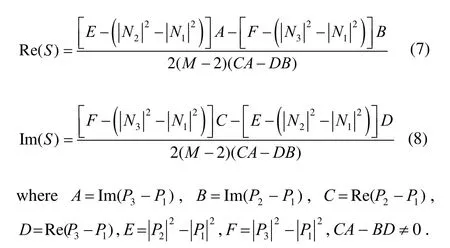
The signal can be restructured by the real part and the imaginary part:
where IFFT is the inverse Fourier transform.
2.2 Algorithm of Direct Blast Interference Rejection
The method of three subarrarys phase matching signal processing(SPMP)can make an efficient estimation of the object scattering signal.The prerequisite is that the direction of arrival(DOA)of object scattering signal is a known parameter.Normally,the angle of direct blast is consistent in bistatic testing,but the angle of object scattering signal varies with the object moving.The object scattering signal can not be estimated by SPMP,but if we take the interference as signal,the interference can be estimated,and through simple subtraction the object scattering signal can be obtained.In this paper,an algorithm which rejects bistatic testing direct blast interference is presented based on three subarrays SPMP.
Fig.2 is a block diagram of signal phase-matching array processing rejecting direct blast interference,in which,CBF means conventional beamforming.The array element space is d in bistatic testing.The DOA of direct blast can be accurately obtained through the surface positioning system.The DOA of object scattering signal and direct blast are different,the signal received by receiver array is expressed as,and the algorithm flow of direct blast rejection is:
1)Obtaining β through surface positioning system,β is the DOA of direct blast.
2)Estimating direct blast interference by SPMP:

3)Time delay processing for the hydrophone array received signal,the time delay parameter is

4)Direct blast rejection for each receiving channel:

5)Time delay compensation for each channel after direct blast rejection.
6)Conventional beamforming for the object scattering signal.
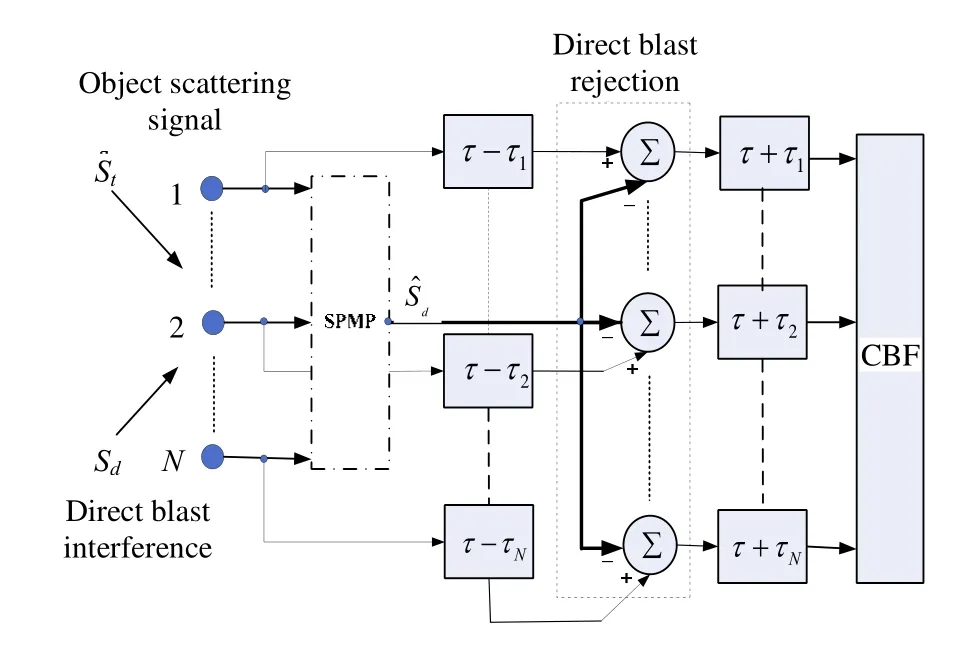
Fig.2.Block diagram of signal phase-matching array processing rejecting direct blast interference.
3.Algorithm Simulation
The effectiveness of the method has been studied through simulation.The simulation parameters are an eight elements receiving array and half-wavelength spacing; the source signal is a 20 ms length continuous wave with the frequency 2000 Hz; background noise is random white noise,the ratio of signal to noise(SNR)are 5 dB,15 dB,and 20 dB,respectively; the ratio of direct blast interference to the object scattering signal is 20 dB; the angle of the direct blast interference and object scattering signal are 20°and 23°,respectively.The beam width of conventional beamforming is 14.5°; interference and object scattering signals are in the same beam,which satisfies the requirements of the problem we studied in this paper.
Fig.3 is the simulated object scattering signal.Fig.4 is simulated hydrophone received signal combined with noise,direct blast signal,and object scattering signal.According to the algorithm above,direct blast rejection is conducted.Fig.5 to Fig.7 are the comparative results of the object scattering signal obtained after interference rejection with different SNR,where the solid line and the dotted line represent the extracted object scattering signal and original signal,respectively.The results show that when the ratio of noise to the object scattering signal is greater than 15 dB,the object scattering signal can be effectively estimated.
Fig.8 is the beamforming outputs of signals before and after direct blast rejection.It shows that after interference rejection,conventional beamforming can obtain the object scattering signal direction accurately,but not vice versa.Summing up the above,the algorithm of direct blast rejection can reject the interference effectively.

Fig.3.Simulated object scattering signal.
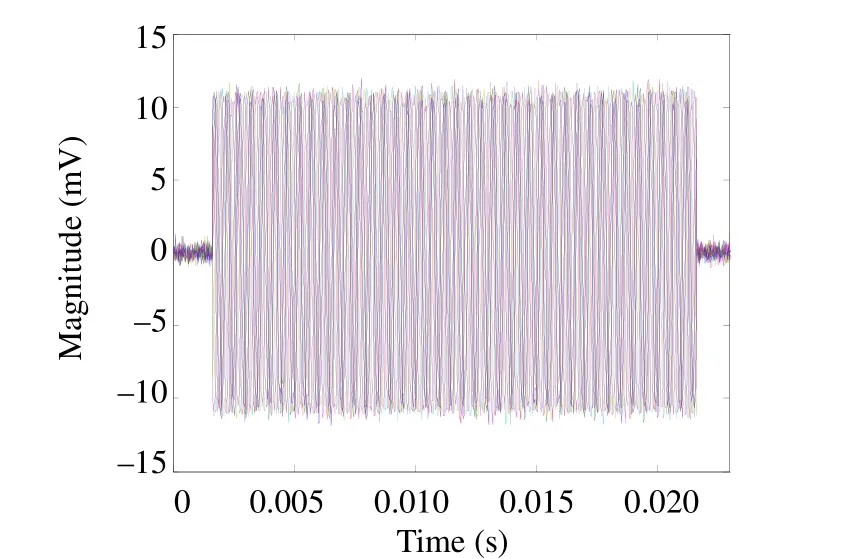
Fig.4.Simulated hydrophone received signal containing with noise,direct blast signal and object scattering signal.

Fig.5.Object scattering signal after direct blast rejection(single channel data with SNR is 5 dB).

Fig.6.Object scattering signal after direct blast rejection(single channel data with SNR is 15 dB).
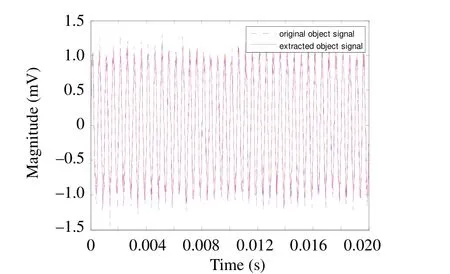
Fig.7.Object scattering signal after direct blast rejection(single channel data with SNR is 20 dB).

Fig.8.Beamforming of the signal before and after direct blast interference rejection.
4.Sea Experiment Testing
The testing was conducted in the waters surrounding Dalian.The object is a mental cylindrical shell,which is 3 m long and 0.3 m diametrical.The transmitter and six elements vector receiver array are 7 m below the sea surface.The spacing of receiver array is 0.18 m,source frequency is 4 kHz,signal pulse length is 20 ms.According to the algorithm studied in this paper,direct blast rejection is conducted for the signal received with open angle 171°.Fig.9 is the extracted object scattering signal.Fig.10 is the comparison of extracted object scattering signal and original signal.The results show that through direct blast rejection,the object scattering signal could be accurately extracted,and the effectiveness is also demonstrated.
5.Conclusions
Direct blast is strong interference in bistatic acoustic testing.The object scattering signal is impossible to be extracted from the strong direct blast interference.In this paper the algorithm of direct blast interference rejection based on SPMP can accurately extract the object scattering.
Simulated results show that when SNR is less than 15 dB,the performance degrades significantly.Sea trial data demonstrate that this algorithm can accurately extract the object scattering when the open angle is greater than 171°.But it should be noted that,the ratio of the object scattering signal to background noise has strong affects on the performance of object scattering signal extraction,while increasing the number of array elements will help to solve the problem.

Fig.9.Extracted object scattering signal(open angle is 171°).

Fig.10.Comparison of extracted object signal and original signal with interference(open angle is 171°).
[1]S.Coraluppi,“Multistatic sonar localization,” IEEE Journal of Oceanic Engineering,vol.31,no.4,pp.964–974,2006.
[2]M.Sandys-Wunsch and M.G.Hazen,“Multistatic localization error due to receiver positioning errors,” IEEE Journal of Oceanic Engineering,vol.27,no.2,pp.328–334,2002.
[3]D.-J.Sun and J.-W.Zhou,“A study on tank experiment of direct blast suppression in Bistatic sonar,” in Proc.of 2011 IEEE Int.Conf.on Signal Processing,Communications and Computing,Xi’an,2011.pp.1–4.
[4]J.Gao and W.-M.Hou,“An adaptive algorithm of direct path interference suppression for active sonar detection,”Technical Acoustics,vol.27,no.3,pp.418–422,2008(in Chinese).
[5]Y.Yao and M.-M.Zhang,“A direct path interference suppression algorithm of bistatic testing based on adaptive weighted spatial smoothing,” in Proc.of the 2011 Asia-Pacific Youth Conf.of Youth Communication and Technology,Hangzhou,2011,pp.28–31.
[6]W.-J.Zhu and J.-C.Sun,“On ensuring effectiveness of signal phase-matching of multisensor array,” Journal of Northwestern Polytechnical University,vol.20,no.4,pp.642–646,2002(in Chinese).
[7]J.-C.Sun and W.-J.Zhu,Principle of Signal Phase-Matching and Application,Xi’an: Northwestern Polytechnical University Publisher,2005,pp.26–28(in Chinese).
[8]G.-C.Li and S.Peng,“Echo to interference ratio of bistatic sonar in shallow water,” in Proc.of IEEE 2010 Int.Conf.on Image Analysis and Signal Processing,Wuhan,2010,pp.691–694.
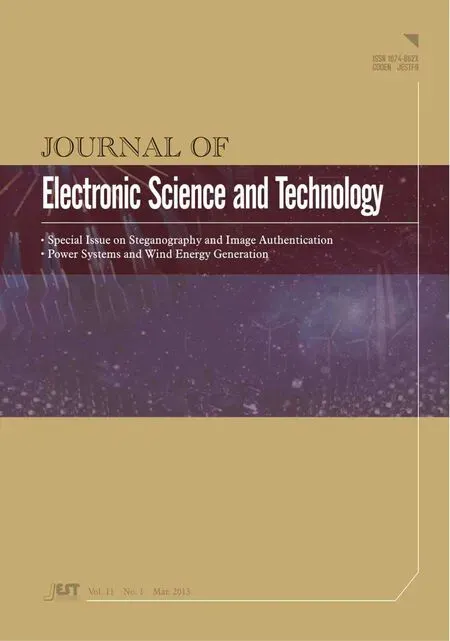 Journal of Electronic Science and Technology2013年1期
Journal of Electronic Science and Technology2013年1期
- Journal of Electronic Science and Technology的其它文章
- Design of MEMS C-Band Microstrip Antenna Array Based on High-Resistance Silicon for Intelligent Ammunition
- Low-Cost Embedded Controller for Complex Control Systems
- Data Hiding in DNA for Authentication of Plant Variety Rights
- An Image Authentication Method by Grouping Most Significant Bits
- A Steganography-Based Optical Image Encryption System Using RGB Channel Integration
- Investigation on Active and Reactive Combined Spot Price Integrated with Wind Farm
